|

|
Getting to Yes:
Vigorous exploration of what you will do if you do not reach agreement can greatly strengthen your hand.
|
105 |
|

|
Getting to Yes:
Knowing what you are going to do if the negotiation does not lead to agreement will give you additional confidence in the negotiating process. It is easier to break off negotiations if you know where you’re going.
|
106 |
|
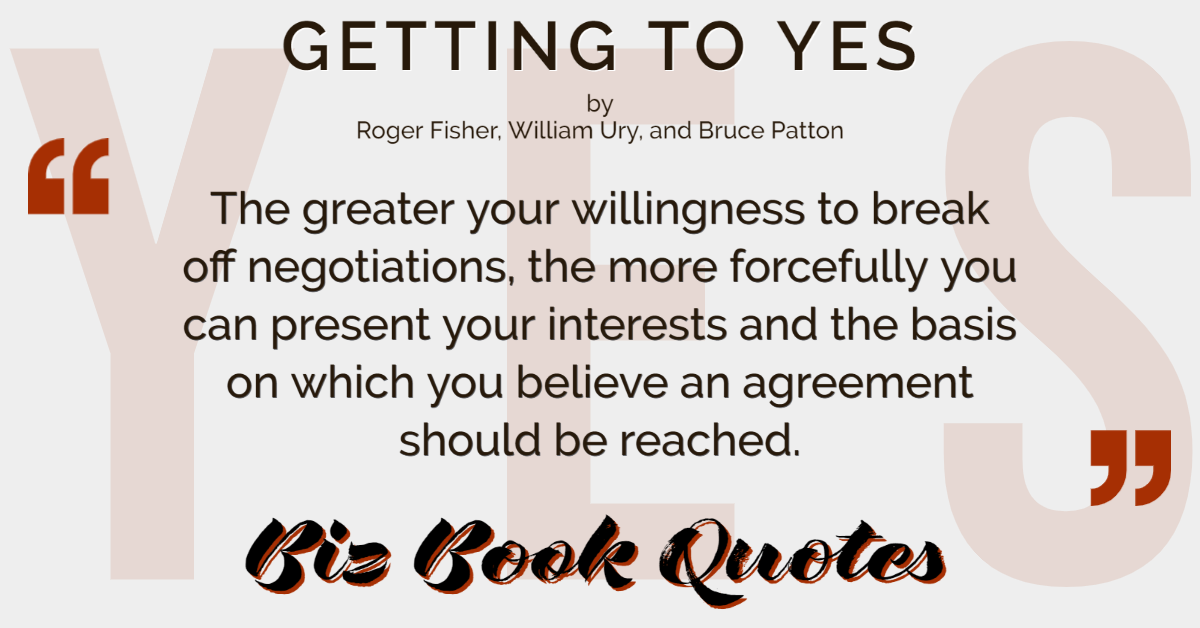
|
Getting to Yes:
The greater your willingness to break off negotiations, the more forcefully you can present your interests and the basis on which you believe an agreement should be reached.
|
106 |
|
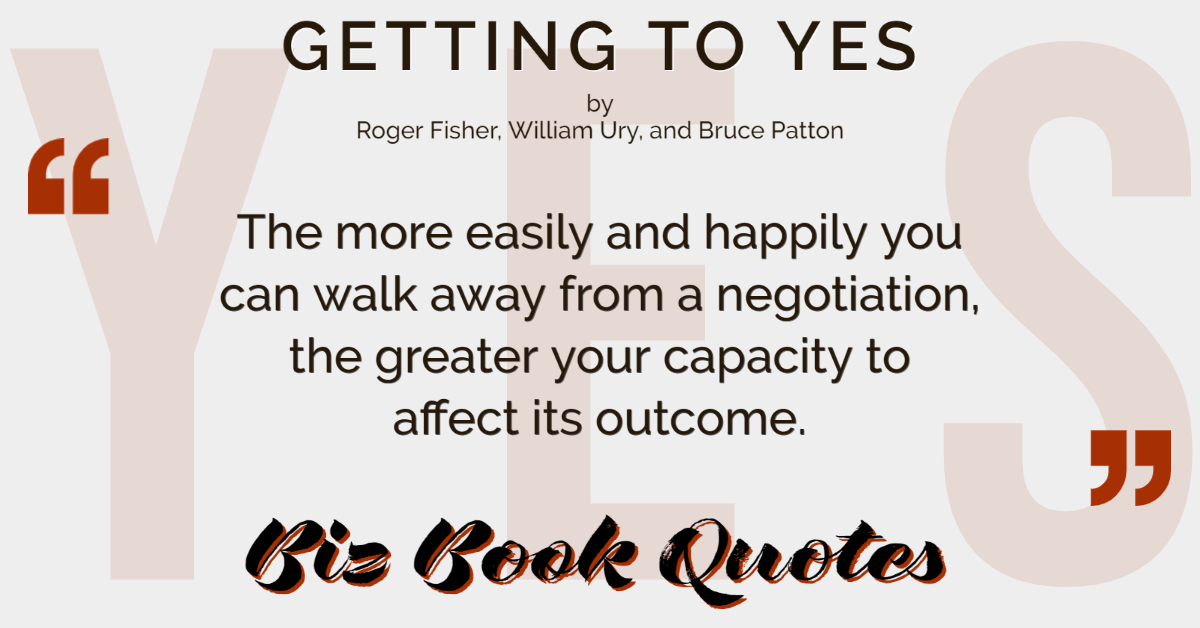
|
Getting to Yes:
The more easily and happily you can walk away from a negotiation, the greater your capacity to affect its outcome.
|
108 |
|
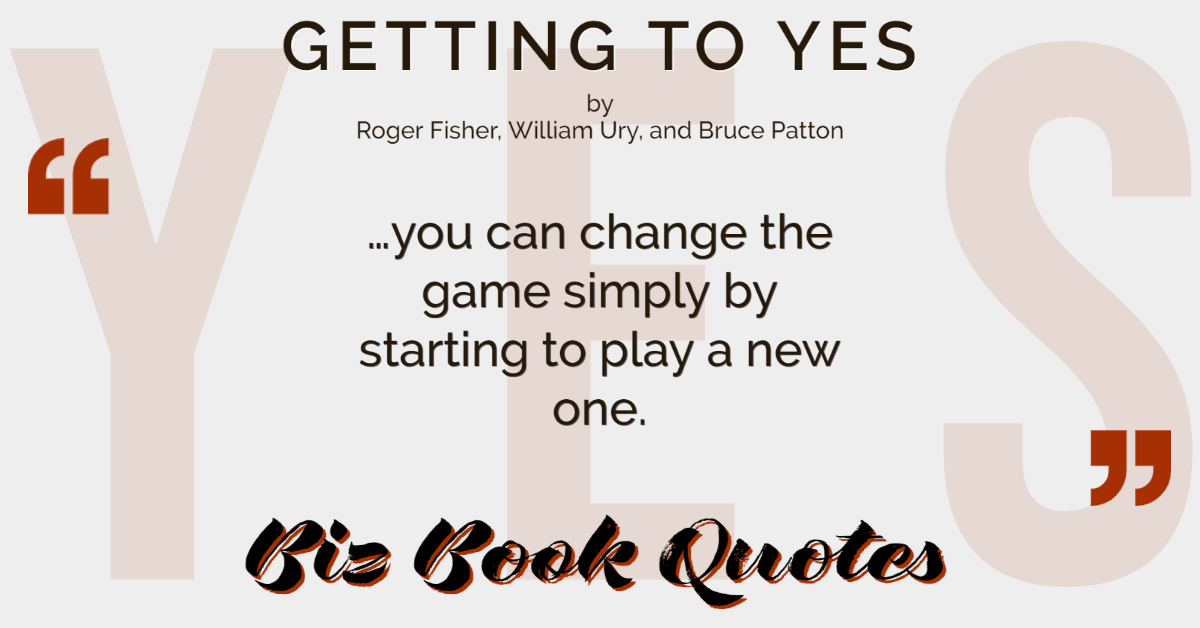
|
Getting to Yes:
…you can change the game simply by starting to play a new one.
|
109 |
|

|
Getting to Yes:
When [your opponent] attacks you, don’t counterattack. Break the vicious cycle by refusing to attack. Instead of pushing back, sidestep their attack and deflect it against the problem.
|
110 |
|
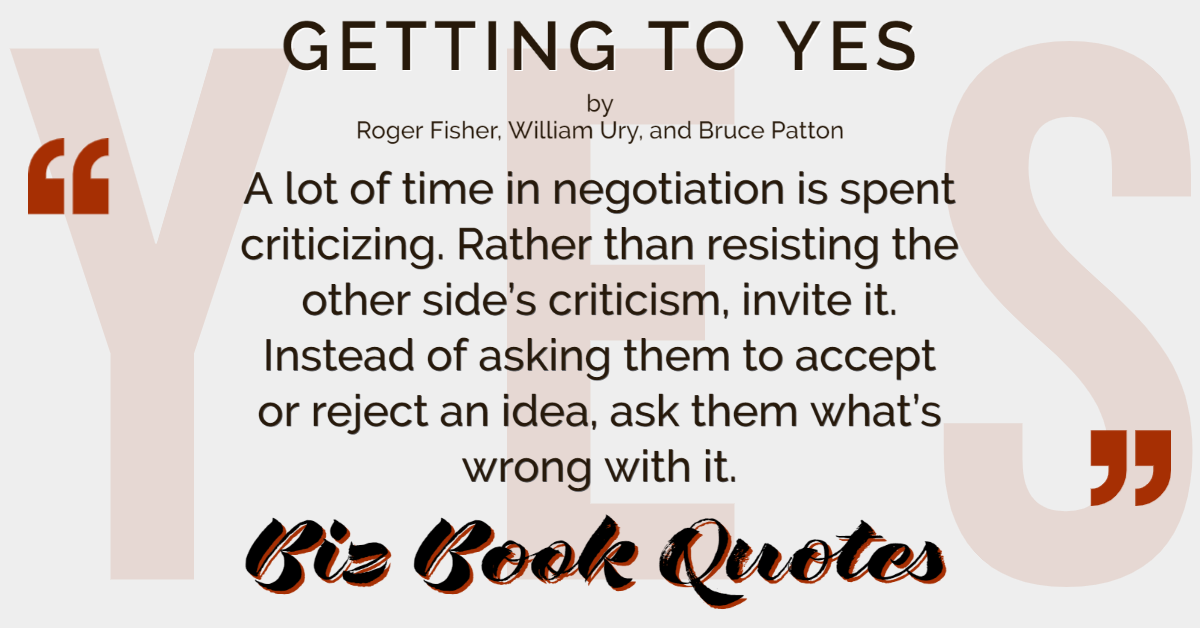
|
Getting to Yes:
A lot of time in negotiation is spent criticizing. Rather than resisting the other side’s criticism, invite it. Instead of asking them to accept or reject an idea, ask them what’s wrong with it.
|
112 |
|

|
Getting to Yes:
Another way to channel criticism in a constructive direction is to turn the situation around and ask for their advice. Ask them what they would do if they were in your position.
|
113 |
|
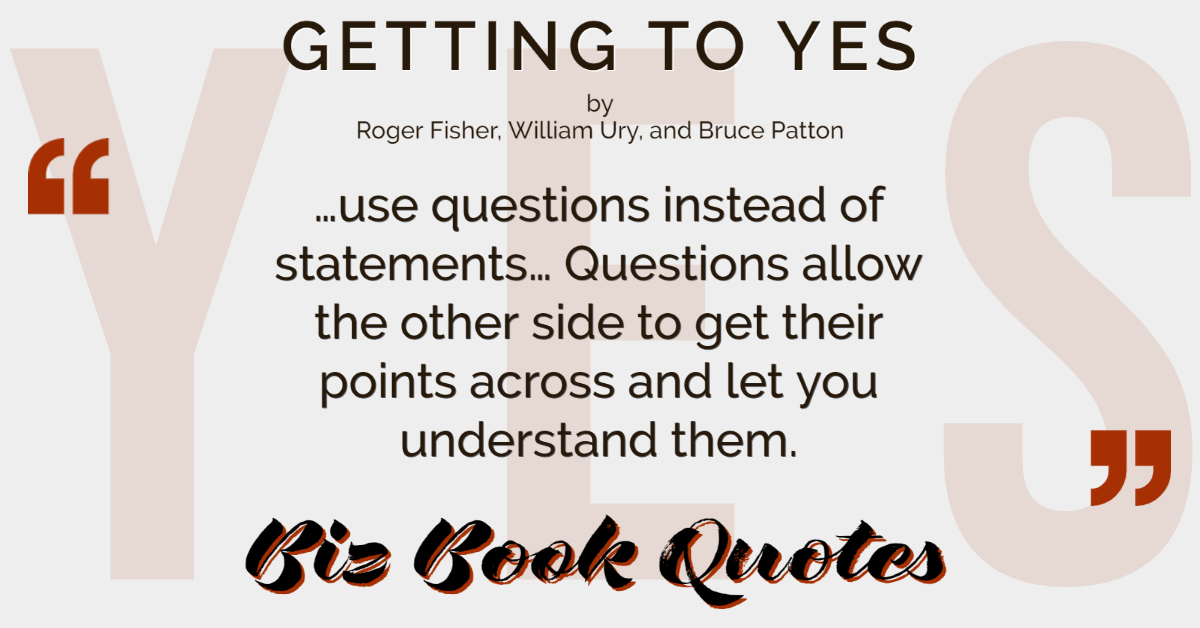
|
Getting to Yes:
…use questions instead of statements… Questions allow the other side to get their points across and let you understand them.
|
113 |
|

|
Getting to Yes:
Silence is one of your best weapons. Use it. If they have made an unreasonable proposal or an attack you regard as unjustified, the best thing to do may be to sit there and not say a word.
|
114 |











